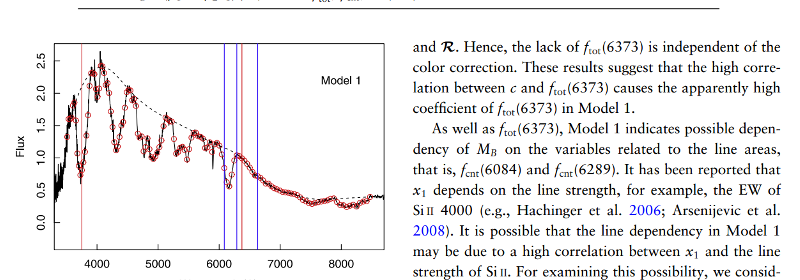Data-driven approach to Type Ia supernovae

M. Uemura, K. S. Kawabata, S. Ikeda, K. Maeda, H. Y. Wu, K. Watanabe, S. Takahashi, and I. Fujishiro, “Data-driven approach to Type Ia supernovae: variable selection on the peak luminosity and clustering in visual analytics”, Journal of Physics: Conference Series, 699, id. 012009, 2016
Type Ia supernovae (SNIa) have an almost uniform peak luminosity, so that they are used as “standard candle” to estimate distances to galaxies in cosmology. In this article, we introduce our two recent works on SNIa based on data-driven approach. The diversity in the peak luminosity of SNIa can be reduced by corrections in several variables. The color and decay rate have been used as the explanatory variables of the peak luminosity in past studies. However, it is proposed that their spectral data could give a better model of the peak luminosity. We use cross-validation in order to control the generalization error and a LASSO-type estimator in order to choose the set of variables. Using 78 samples and 276 candidates of variables, we confirm that the peak luminosity depends on the color and decay rate. Our analysis does not support adding any other variables in order to have a better generalization error. On the other hand, this analysis is based on the assumption that SNIa originate in a single population, while it is not trivial. Indeed, several sub-types possibly having different nature have been proposed. We used a visual analytics tool for the asymmetric biclustering method to find both a good set of variables and samples at the same time. Using 14 variables and 132 samples, we found that SNIa can be divided into two categories by the expansion velocity of ejecta. Those examples demonstrate that the data-driven approach is useful for high-dimensional large-volume data which becomes common in modern astronomy.
